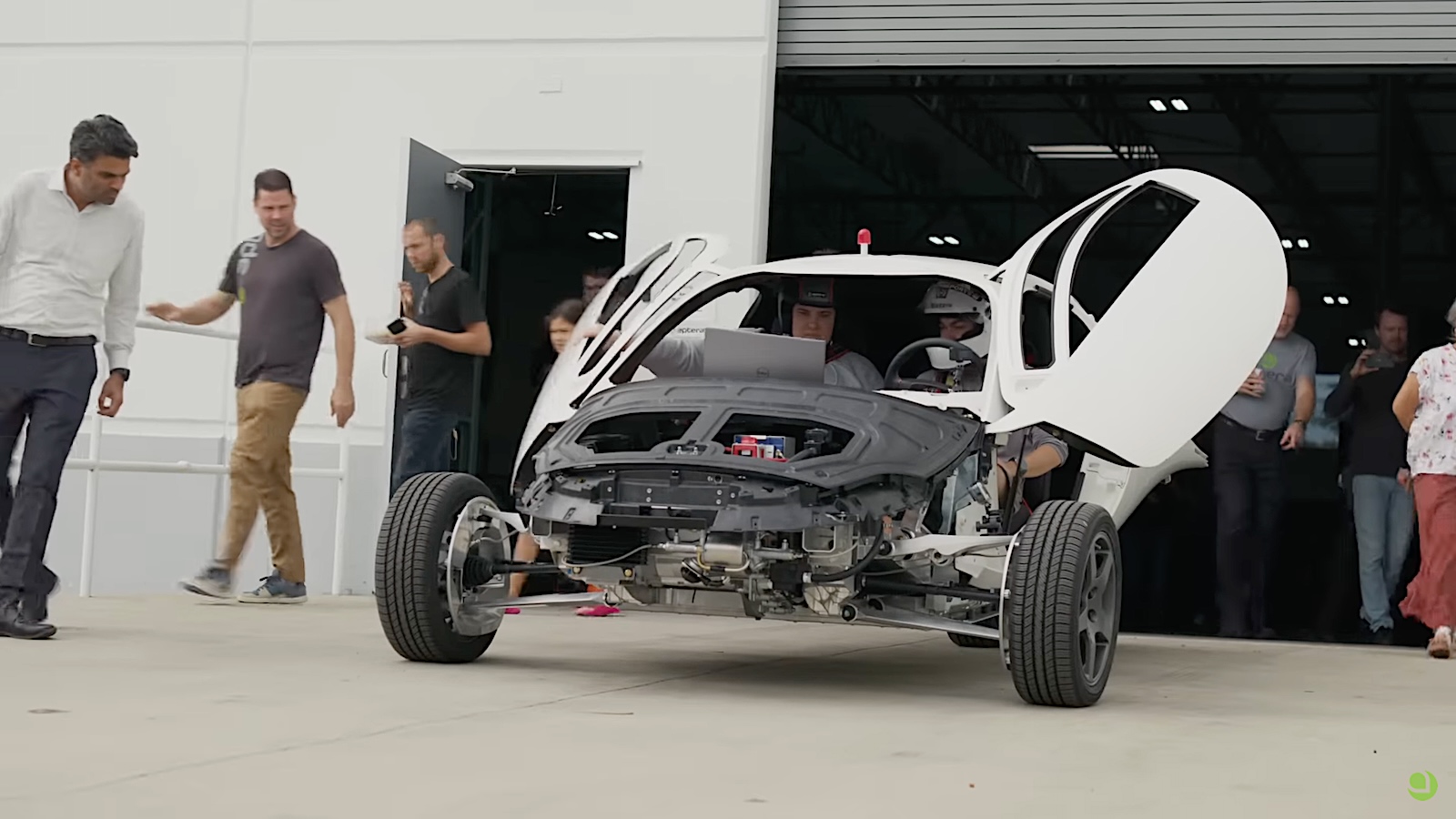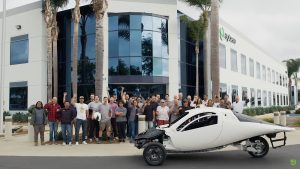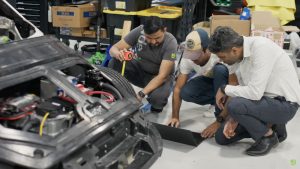Aptera Motors, best known for its awkwardly shaped three-wheeled vehicle, completed a successful low-speed drive of its production-intent vehicle. The vehicle performed an outdoor lap of its facility in San Diego for its real-world validation and testing.
The drive didn’t involve using the vehicle’s solar panels, but the equipment on the vehicle is considered production-ready rather than a prototype. It also incorporated Aptera’s recently adopted Vitesco Technologies EMR3 drivetrain.
The test drive validated Aptera’s proprietary battery pack while putting the three-wheeler’s carbon composite body structure some road testing as well.
“Driving our first production-intent vehicle marks an extraordinary moment in Aptera’s journey,” said Steve Fambro, Aptera’s co-founder and co-CEO. “It demonstrates real progress toward delivering a vehicle that redefines efficiency, sustainability, and energy independence.”
Big progress
For the first time, Aptera’s production composite body structure, also known as its Body in Carbon or BinC, is spinning its production drivetrain under code developed in-house with power from a proprietary battery pack, a testament to the company’s engineering agility and innovative manufacturing approach.
Motoring around the parking lot, the Aptera looks more like a swoopy small passenger plane than the UFO-like model that’s been floating around the car universe for more than a decade now. Putting it through its regulatory paces and shipping the first ones to customers is still a massive gap.
“It’s the first Aptera you see that doesn’t have tape or tie wraps on it,” Fambro said in a YouTube video chronicling the event. “Everything you see on it is production intent. It’s a step function level better than anything we’ve ever done. It is designed to be manufactured in high volume. There is nothing prototype about this vehicle. It is ready for production.”
More EV Stories
- Chevrolet’s New Equinox EV May be the Affordable Electric Vehicle the Market Needs
- Jeep Promises $25,000 EV “Very Soon”
- Ford Slashes Prices Again on Mustang Mach-E
What’s next?
The engineering team is wasting no time moving on to the next step, which features the integration of Aptera’s solar technology, production-intent thermal management system, and exterior surfaces.
Once installed, Aptera’s production-intent vehicle will undergo high-speed track testing to validate its general performance characteristics and confirm core efficiency figures, including watt-hours per mile, solar charging rates, and estimated battery range.
Fambro didn’t lay out a timetable for when that testing will begin but did note that the team moved from completing the slow-speed testing and validation to getting the necessary equipment reinstalled on the vehicle to perform the high-speed tests. He was quick to praise the development team for the long nights and attention to detail.
The Aptera currently has nearly 50,000 pre-order reservation holders, the company noted.





0 Comments